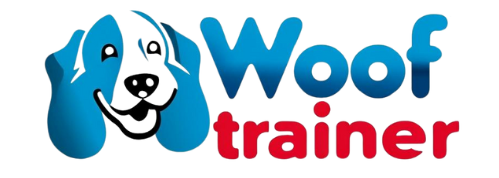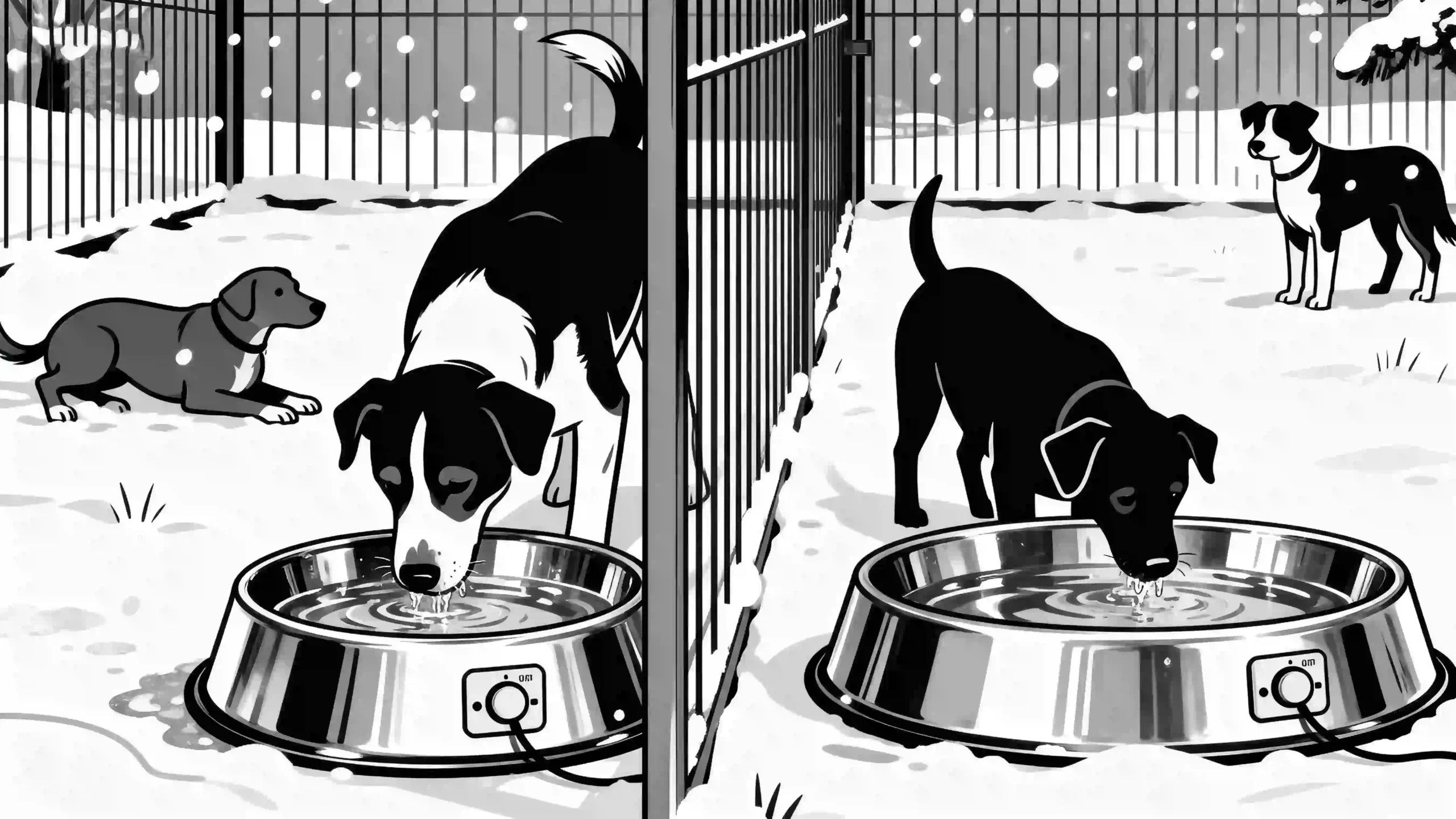As a kennel operator or breeder in a region with long, hard winters, you know that keeping multiple dogs well‐hydrated is more than just leaving bowls around. Frozen water, constantly changing out bowls, and safety risks make winter a juggling act. Heated water bowls for breeders can transform your winter routine—boosting kennel efficiency, reducing labor, and supporting puppy hydration and dog health winter after winter.
The Winter Hydration Problem
When the temperature drops, water in standard bowls freezes rapidly. Dogs may stop drinking if the water is too cold or partially iced over. Puppies, especially, have higher hydration needs relative to their body size, and interruptions in water access can lead to dehydration, poor digestion, even health setbacks. For large kennels or multiple litters, replacing frozen water several times a day becomes a big time sink.
What a Good Heated Water Bowl Should Deliver
To be truly useful for breeders or boarding facilities, a heated water bowl must:
- Resist freezing even in very low ambient temperatures
- Be safe for dogs and humans around water and electricity
- Be durable against heavy usage, chewing, knocks, and frequent cleaning
- Maintain water in a useable temperature range—not too warm to breed bacteria, not too cold to discourage drinking
- Reduce maintenance burden and cost over the season
Many products on the market try, but some cut corners: thin materials, weak cords, or insufficient heating power.
The WoofTrainer Heated Dog Bowl: A High‐Duty Winter Solution
One example that hits many of the right marks is the WoofTrainer Heated Dog Bowl—built for breeders facing harsh winters:
- It’s made of food‐grade 18/8 stainless steel, 30 cm in diameter and 10 cm high → tough, easy to clean, won’t crack or warp under freeze‐thaw cycles.
- Operates on a 24 V low‐voltage supply, which greatly reduces risk of electrical shock to pets or handlers.
- Uses a 50 W heating element that keeps water in an optimal 0°C to 20°C range even when ambient drops to –20°C.
- Safety & durability features include a chew‐resistant stainless steel wrap on the 1.3-meter power cord, and a rubber‐ringed base to prevent tipping.
If you’re buying in bulk, a solution like this gives you peace of mind: fewer replacements, fewer emergencies.
Benefits for Breeders & Kennel Operators
Let’s walk through practical benefits:
- Consistent Puppy Hydration
Puppies lose more water per pound of body weight than adults. A bowl with water that stays unfrozen means they can drink freely throughout cold nights and mornings, lowering risk of dehydration. Even small delays in drinking can disrupt digestion or energy levels in young pups. - Improved Dog Health Winter-wide
When dogs drink water that’s near freezing, they may drink less, leading to thicker saliva, higher concentrations of waste, and in extreme cases, kidney or urinary issues. Maintaining water above freezing helps reduce these risks. - Labor Savings & Kennel Efficiency
Instead of replacing or chipping ice off bowls every few hours, you spend maybe once per day checking. Your staff can reallocate that time to cleaning, feeding, or socialization. Bulk purchasing durable heated bowls amortizes cost over many winters. - Safety for Your Staff & Animals
Electric hazards, brittle plastic in cold, tipped‐over bowls—these are not trivial. A well-designed heated water bowl minimizes risk of shock, burns, or injuries related to broken bowls or exposed heating elements.
Implementation Tips: What to Consider & How to Set Up
To get the most from heated water bowls, follow these best practices:
- Place bowls out of direct wind or drafts. Even good heaters struggle if cold wind constantly pulls heat away.
- Use anti-tip bases or rubber rings, especially where active dogs may bump into them.
- Run cords safely. Protect cords from chewing (use wraps or conduit), avoid puddles near connections, and use outlets with ground fault protection.
- Monitor water temperature. The goal isn’t warm water, it’s water that’s drinkable and unfrozen. Aim for something like 0 °C to 15-20 °C depending on your breed.
- Clean bowls regularly. Heated bowls warm water enough that bacteria multiply faster, so you still need daily or twice‐daily cleaning, especially in winter when water tends to stagnate.
Safety & Compliance: Don’t Skip This
Electrical heated pet products have been documented as fire hazards when used improperly. For example, cords chewed by puppies or old outlets can lead to shorts. Also, many manufacturers test for safety. Bowls that are MET-listed or certified are safer choices.
You should also refer to Safety Guidelines for Electric Heated Dog Bowls in Boarding Facilities to ensure you’re meeting local codes, using GFCI outlets, checking insulation, and avoiding extension cords unless certified safe.
Choosing the Right Size & Quantity
- For litter kennels, you’ll need bowls sized to ensure all puppies in a pen can reach water without crowding. Bigger bowls with heavier bases help maintain stability.
- For adult dogs, especially larger breeds, use bowls with greater diameter and more volume so water doesn’t cool too fast when many animals drink at once.
- Keep spares. Even heavy-duty bowls can fail; having backups ensures you’re never without water.
Case Study: Winterizing a Medium Kennel
Here’s a scenario:
You run a kennel with 40 dogs across a dozen pens. Winter temps hit –15 to –25 °C for extended periods. Last year you used standard heated pet bowls (acrylic or plastic) and had to change frozen water 3-4 times a day per pen. Peeling, cracked bowls, damaged cords, and health issues (dry noses, some urinary tract irritation) became frequent.
This season, you install one heavy-duty stainless steel heated bowl per pen, low-voltage supply, properly wrapped cords, rubber bases. Result: water stays unfrozen overnight, staff time for water replacement drops by ~70%, fewer cracked bowls, cleaner water because bowls tolerate harsher scrubbing, better overall hydration and health. The upfront cost is higher, but ROI is strong within a single winter.
| Type | Pros | Cons |
|---|---|---|
| Plastic bowls with heating pad/integrated heater | Lower initial cost; lightweight | Crack in extreme cold; heater often weak; cord exposed; less durable under heavy use |
| Metal bowls with high-volt supplies | Often heats well; sturdy materials | Riskier electrical hazard; higher running cost; often heavy and bulky |
| Low-voltage stainless steel bowls (e.g. 24V) | Safer; durable; resists cold; long lifespan | Higher initial cost; may require specific transformer or wiring setup |
Beware of bowls where the cord or heating element is poorly protected. Some heated bowls fail quickly due to chew damage or corrosion. Users in forums have noted many plastic bowls last only a winter before element failure.
Filling Gaps: What Many Articles Missed
In reviewing many articles, I noticed many how-to’s neglect:
- The importance of water volume vs. heating power – bigger bowls need proportionally stronger heating and insulation, but many guides assume small bowls or single dog households.
- Behavioral factors: dogs sometimes refuse frozen or near-frozen bowls—but also sometimes reject bowls that smell of plastic or aren’t clean. So cleaning and material are just as important as temperature.
- Electrical maintenance: checking insulation, corrosion, wiring inside cold and damp kennels. Often skipped in “best‐of” lists.
This article addresses those gaps because as a breeder you’ll want solutions that work week after week, not just what sounds good in a blog.
When Art Meets Safety: Internal Policies to Adopt
- Create a checklist for daily inspection: water presence, heating element status, cord condition, base integrity.
- Set a policy for how often to replace bowls or heaters—don’t wait for failure to happen, schedule replacements.
- Train staff on Winterizing Your Kennel: Must-Have Heated Dog Bowl Equipment so everyone understands what to use, how to set up, how to respond to freeze warnings.
Overcoming Resistance to Heated Bowls
Sometimes you’ll hear:
“They’re expensive,” or “Water still gets icy,” or “Electric cords are a hazard.”
Here are ways to address those:
- Cost spread over many seasons: A stainless steel, low-voltage bowl may cost more up front, but if it lasts 3–5 winters under heavy use, you spend less overall compared to replacing cheaper plastic ones every year or two.
- Use of thermostats / built-in controls helps ensure water doesn’t overheat (reducing bacteria risk) or under-heat (allowing ice).
- Electrical safety design (low voltage, chew-resistant wraps, rubber bases) mitigates risks significantly compared to older high-volt heaters.
Related Topics
If you’re putting together a winter strategy for your kennel, you’ll also want to check:
-
[Safety Guidelines for Electric Heated Dog Bowls in Boarding Facilities] – for rules, wiring, certification, staff training.
-
[Why Your Dog Refuses to Drink from Frozen Water Bowls] – understanding dog behavior and avoiding hydration drop-offs.
Conclusion
Heated water bowls for breeders aren’t a “luxury”—they’re essential to maintaining puppy hydration, supporting dog health during winter, and keeping your kennel running smoothly. When you invest properly—choosing durable materials, low-voltage safety, proper insulation, and robust equipment like the WoofTrainer—you reduce labor, improve animal welfare, and prevent emergencies. In cold climates, the right heated water bowl is one of your best allies.
FAQs
-
How cold can a heated water bowl handle before ice forms?
It depends on the design. A well-built stainless steel bowl with a reliable 50 W heater can maintain liquid water even at around −20 °C. Lighter-duty or poorly insulated ones may freeze sooner. -
Is low-voltage really safer than 120 V or 240 V for heated bowls?
Yes—lower voltage reduces the risk of electrical shock, particularly in damp or wet environments common in kennels. It also allows safer design around chew-resistant wiring and avoids high heat buildup. -
Do dogs prefer heated bowls?
Most do—dogs often avoid cold or icy water. But cleanliness, scent, and bowl material all influence drinking behavior. Ensuring the bowl is clean and material is neutral helps boost puppy hydration and dog health winter-time. -
How many heated bowls do I need per kennel or pen?
At least one reliably heated bowl per pen is minimum. For large pens or multiple dogs, two may work better so drinking and competition don’t lead to tipping or crowding. Having spares ensures you’re never unprepared. -
What safety inspections should I run regularly?
Inspect cords and plugs for chew damage or fraying, ensure thermostat/heating element still cycles correctly, base and bowl integrity (no cracks or corrosion), and that the outlet is grounded and preferably protected by GFCI/AFCI. Also check that cleaning routines are effective to prevent bacterial buildup.


